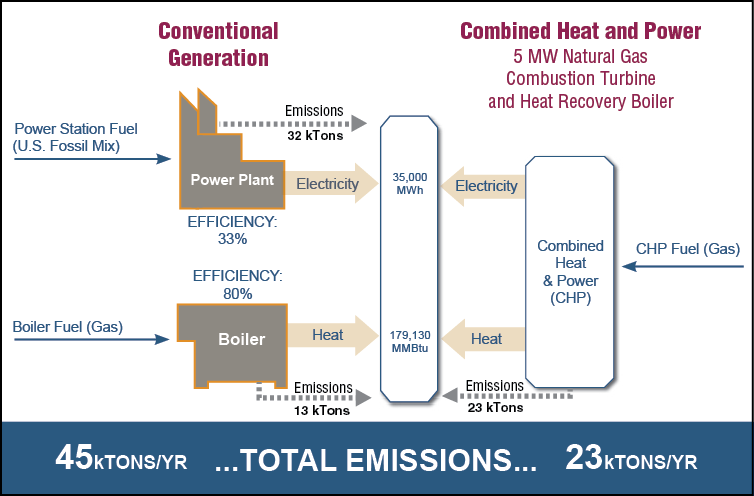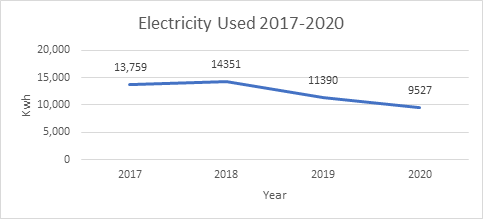|
By Maurice Carter, Sustainable Newton President  When we think about climate change, fossil fuels, and carbon footprints, the first culprits most of us think about are the vehicles we drive. And those emissions are a big deal. That's why you're seeing so much activity around electric cars and trucks. But globally, according to Project Drawdown, 25% of the world's greenhouse gas emissions come from electricity generation. So, to achieve zero-emission transportation, we must also transform how we generate power to charge those vehicles, light/heat/cool our homes, and run our factories. In Georgia, ~66% of our electricity is still generated by plants burning fossil fuels (coal, oil, and natural gas) that create those emissions. The remainder comes from nuclear (26%) and renewables (9% -- primarily hydro and solar). Renewable energy -- primarily wind and solar -- gets most of the press. But there's really more to it. Cost overruns and schedule delays with the additional reactors at Plant Vogtle reflect how difficult it is to scale quickly with nuclear. But, until battery storage can be deployed at massive scale, the intermittent generation characteristics of wind and solar mean we need other options. In fact, Project Drawdown has identified, analyzed, and quantified 32 different climate solutions in the Electricity Sector as part of our overall carbon reduction plan. Understanding them all can get pretty mind-boggling! University researchers and public policy experts in our state have banded together though Drawdown Georgia to narrow our climate focus to just 20 solutions with the greatest practical impact in Georgia over the coming decade (by 2030). And five of those are in the Electricity Sector. The sun shines brightly most days in Georgia, which is why both Rooftop Solar and Large-Scale (Utility) Solar are among the list of five. On the other hand, our hilly terrain makes on-shore wind farms non-viable here. The other three Electricity Sector solutions prioritized by Drawdown Georgia are less familiar to most of us:
I recently spent time learning about Cogeneration through conversations with a local industry interested in using Combined Heat and Power (CHP -- a form of Cogeneration) to reduce greenhouse gas emissions from their manufacturing process. Those conversations included a meeting with a leading CHP expert, Marilyn Brown, at Georgia Tech’s School of Public Policy, who recently published extensive research on the current state and future potential for CHP in Georgia. Dr. Brown is also a member of the core research team for Drawdown Georgia. When I first heard about the project being considered locally and learned it would use natural gas, I was skeptical about the carbon reduction benefits. But, since Cogeneration/CHP is a priority solution in the Drawdown Georgia framework, I was also open-minded and curious. Both the US Department of Energy (DOE) and the US Environmental Protection Agency (EPA) promote CHP as an energy efficiency measure and a way to lower greenhouse gas emissions/reduce environmental impacts. On its website, the EPA provides an easy to follow explanation of the benefits from CHP, and the DOE offers technical assistance for installations through its Better Buildings program. In the future, CHP can potentially be fueled by an emissions-free energy source like hydrogen. But today most systems burn either natural gas or bio-mass left over from the industrial process. Still, even with a fossil fuel energy source, the graphic below from the EPA shows how a CHP system results in lower carbon emissions than a traditional scenario where natural gas is burned separately to power both steam boilers and electricity generation at a power plant somewhere else. Reduced emissions are achieved through several factors:
Also from her team's research: If Georgia added CHP systems to the 9,374 sites that are suitable for cogeneration, it could reduce carbon emissions in Georgia by 13%. Bringing CHP to just 34 of Georgia’s industrial plants, each with 25 megawatts of electricity capacity, could reduce greenhouse gas emissions by 2%. The study authors, using modeling tools they developed, note that this “achievable” level of CHP adoption could add 2,000 jobs to the state; full deployment could support 13,000 new jobs. So, while solar has a sunny future in Georgia, less familiar solutions like Cogeneration, Landfill Methane, and Demand Response are an equally important part of the climate solution mix. We know from science how crucial it is to reach net-zero emissions by 2050. We have a lot of eggs to carry and will need every basket we can find.
0 Comments
By Maurice Carter, Sustainable Newton President  In regularly scheduled meetings Monday night, the city councils of Covington and Oxford each voted to approve solar power purchase contracts (SPPCs) with the Municipal Electric Association of Georgia (MEAG). Covington will purchase up to 15 megawatts (MW) of solar capacity through MEAG's 80 MW solar initiative scheduled to come online in 2023. Oxford will commit to 4 MW. This initiative marks the first time MEAG has included a utility-scale solar offering in its power portfolio. The association -- which serves 49 municipal electric companies in Georgia -- will contract with a third party vendor to construct and operate an 80 MW solar farm in south Georgia. MEAG will resell the solar-sourced electricity (and associated renewable energy credits) to cities participating in the project. The actual capacity Covington and Oxford receive will depend on the total purchase commitments received from all eligible municipal electric companies. If requests exceed the 80 MW capacity of the project, then each interested city will receive a reduced allocation based on their percentage of the total requested. In presenting the MEAG proposal to City Council Monday night, Covington Electric Director Joel Smith positioned the solar opportunity as an important step for achieving the city's goal of 90% emissions-free electricity by 2045. According to Smith, Covington plans sell the new solar capacity exclusively to large industrial customers via a Renewable Energy Customer Agreement (RECA), giving those large customers the opportunity to meet sustainability objectives and comply with corporate mandates. One existing Covington customer has already expressed interest in purchasing 50% of Covington's solar capacity under the agreement. Oxford plans to add the additional electricity to their grid, serving all customers. Sustainable Newton supporters may recall our MEAG cities (Covington, Oxford, and Mansfield) posed special challenges during our 2019-20 Solarize Newton-Morgan campaign -- due to the standby capacity fee MEAG encouraged those cities to adopt as a hedge against revenue loss from rooftop solar. The Oxford City Council ultimately voted to rescind their standby fee, and Covington voted to reduce (but not eliminate) theirs. In 2019, MEAG had no publicly announced plans for a solar, and you could not even find the word "solar" anywhere on their website. These solar power purchase contracts with MEAG are a very big step forward in just two short years. Sustainable Newton remains committed to working with local officials in each of our cities to remove barriers to rooftop solar and to even provide incentives (such as net metering, time of use rate plans, etc.). But, rooftop solar alone will not reduce greenhouse gas emission sufficiently to address the climate crisis. We've aligned our climate action plans with Drawdown Georgia, and utility-scale solar is a big part of that plan. For the Electricity solution sector, Drawdown Georgia has set the following statewide targets for 2030:
During our solarize campaign, consultants estimated the 85 kW of rooftop solar installed through the campaign would mean 159,460 pounds less carbon being emitted into the atmosphere each year. Extrapolating that formula, 19 MW of utility-scale solar will result in roughly 35.6 million pounds (or 16,202 metric tons) less carbon emissions annually from electricity generation for our two cities. This stuff adds up! We are grateful to MEAG for taking this important initiative and proud of our elected officials and city staffs in Covington and Oxford for stepping up in a big way! May this only be the beginning of even bigger things to come!! By Theodosia Wade, Former Sustainable Newton Board Member In March 2019, my husband Billy and I installed 12 solar panels on our roof as part of the Solarize Newton Morgan campaign. We were super excited to to reduce our carbon footprint, become a little more energy independent, and save money. Not only did the solarize campaign allow us to get better pricing on installation and materials, but it also did the leg work of choosing a reputable solar installer. We worked with folks who had already gone solar and others like us who were adding solar for the first time. It was a great experience.
Fast forward to today and we can look at the numbers to see how much electricity we're using and how much money we have saved over the last 2+ years.
By Maurice Carter, Sustainable Newton President 
Extreme weather and widespread power outages in Texas are headline news everywhere this week. As of today, nearly three million customers remain without power, after record-breaking low temperatures and heavy snowfall struck the state. It's a dangerous situation, and many of us have friends and/or family directly impacted.
Emotions are frayed and lives remain at risk. As with any crisis, priority one is restoring power and tending to those in need. Lessons learned can wait until safety is restored. But it's a sad reality we must also contend with disinformation about root causes and contributing factors to the energy portion of this crisis. Specifically, some clean energy naysayers see an opportunity to push a false narrative that these power outages were primarily caused by a wind power failure. This simply is not true. |
Categories
All
Archives
February 2024
|
Photos from Chemist 4 U, shixart1985 (CC BY 2.0), Juhele_CZ, EarthLED, shixart1985, EcuaVoz, Chemist 4 U



 RSS Feed
RSS Feed
